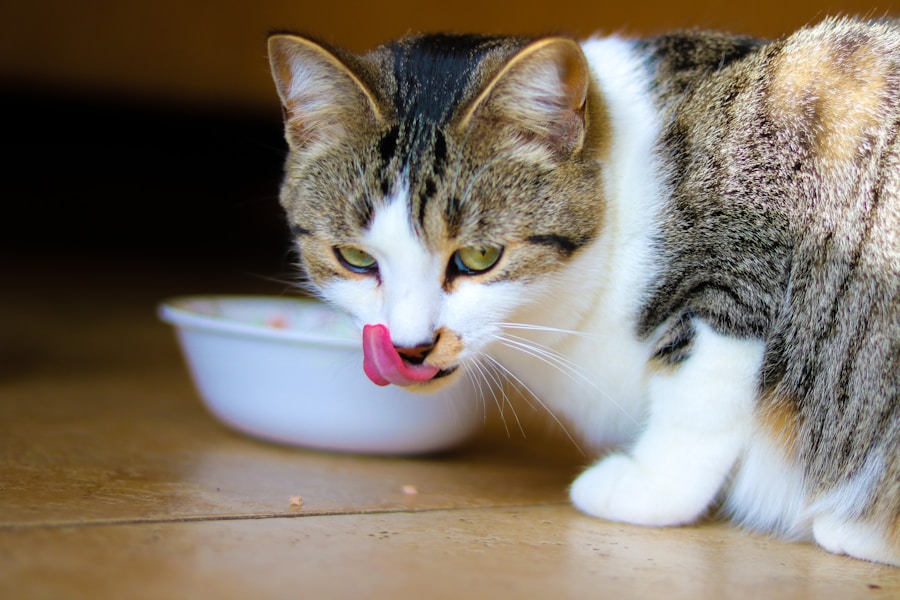Litter training is an essential part of raising a kitten, as it teaches them where to go to the bathroom and helps to keep your home clean and odor-free. By teaching your kitten to use a litter box, you are providing them with a designated area to relieve themselves, which can help prevent accidents and messes around the house. Additionally, litter training can also help to prevent your kitten from developing bad habits such as going to the bathroom on furniture or carpets. It is important to start litter training as soon as you bring your kitten home, as this will help them to develop good habits early on. By understanding the importance of litter training, you can set your kitten up for success and create a clean and comfortable environment for both you and your pet.
Litter training is also important for the health and well-being of your kitten. By providing them with a clean and safe place to go to the bathroom, you can help prevent the spread of bacteria and parasites that can be found in outdoor environments. Additionally, litter training can also help to monitor your kitten’s urinary and digestive health, as you will be able to easily observe their bathroom habits. This can be especially important for identifying any potential health issues early on, as changes in litter box behavior can be an early indicator of health problems. By understanding the importance of litter training, you can ensure that your kitten is happy, healthy, and well-adjusted in their new home.
Preparing Your Home for Litter Training
Before bringing your new kitten home, it is important to prepare your home for litter training. This includes setting up a designated area for the litter box, as well as making sure that the environment is safe and comfortable for your pet. Start by choosing a quiet and easily accessible location for the litter box, away from high-traffic areas and loud noises. This will help your kitten feel secure and relaxed while using the litter box. Additionally, make sure that the area is well-ventilated and has good lighting, as this will help to create a pleasant environment for your pet.
In addition to setting up the litter box area, it is also important to kitten-proof your home to prevent accidents and messes. This includes removing any toxic plants or substances that could be harmful to your pet, as well as securing any loose cords or small objects that could pose a choking hazard. By preparing your home for litter training, you can create a safe and comfortable environment for your new kitten to learn and develop good bathroom habits.
Choosing the Right Litter Box and Litter
When it comes to litter training, choosing the right litter box and litter is essential for success. There are many different types of litter boxes available, including open, closed, and self-cleaning options. It is important to choose a litter box that is appropriate for your kitten’s size and age, as well as one that is easy for them to access and use. Additionally, consider the size of your home and the number of cats you have when choosing a litter box, as this will help determine the best option for your needs.
In addition to choosing the right litter box, it is also important to select the right type of litter for your kitten. There are many different types of litter available, including clumping, non-clumping, scented, and unscented options. Consider your kitten’s preferences and any potential allergies when choosing a litter, as well as the ease of cleaning and odor control. By choosing the right litter box and litter, you can create a comfortable and inviting environment for your kitten to use the bathroom.
Introducing Your Kitten to the Litter Box
Once you have prepared your home and chosen the right litter box and litter, it is time to introduce your kitten to the litter box. Start by placing your kitten in the litter box after meals or naps, as this is when they are most likely to need to go to the bathroom. Gently place them in the box and allow them to explore and sniff around, encouraging them with positive reinforcement such as praise or treats. It is important to be patient during this process, as some kittens may take longer than others to get used to using the litter box.
In addition to introducing your kitten to the litter box, it is also important to monitor their bathroom habits and provide them with plenty of opportunities to use the box. Keep an eye on their behavior and take note of any signs that they may need to go to the bathroom, such as sniffing or circling. If you notice any accidents outside of the litter box, gently place your kitten in the box and encourage them to use it. By introducing your kitten to the litter box in a positive and supportive manner, you can help them develop good bathroom habits early on.
Encouraging and Reinforcing Good Litter Box Habits
Once your kitten has started using the litter box regularly, it is important to continue encouraging and reinforcing good bathroom habits. This includes keeping the litter box clean and well-maintained, as well as providing positive reinforcement for using the box. Scoop the litter box daily and change the litter regularly to keep it fresh and inviting for your pet. Additionally, consider using positive reinforcement such as praise or treats when your kitten uses the litter box, as this will help reinforce good habits.
In addition to encouraging good bathroom habits, it is also important to address any potential issues or challenges that may arise during the litter training process. This includes addressing any aversions or fears that your kitten may have towards the litter box, as well as any potential territorial issues with other pets in the household. By providing a supportive and positive environment for your kitten to use the litter box, you can help them develop good habits that will last a lifetime.
Troubleshooting Common Litter Training Issues
Despite your best efforts, there may be times when your kitten experiences challenges or setbacks during the litter training process. Common issues include aversions to the litter box, accidents outside of the box, or territorial disputes with other pets in the household. It is important to address these issues promptly and with patience, as forcing or punishing your kitten can lead to further problems.
If your kitten is avoiding the litter box, consider trying different types of litter or boxes to see if they have a preference. Additionally, make sure that the area around the litter box is clean and free from any potential stressors or distractions. If accidents occur outside of the box, clean up the mess promptly and avoid punishing your kitten, as this can create negative associations with the litter box. If territorial issues arise with other pets in the household, consider providing separate litter boxes for each pet and addressing any potential conflicts through positive reinforcement and behavior modification.
Celebrating Success: Maintaining Good Litter Box Habits
Once your kitten has successfully mastered litter training, it is important to maintain good bathroom habits by keeping the litter box clean and well-maintained. This includes scooping the box daily and changing the litter regularly to keep it fresh and inviting for your pet. Additionally, consider providing positive reinforcement such as praise or treats when your kitten uses the litter box, as this will help reinforce good habits.
In addition to maintaining good bathroom habits, it is also important to monitor your kitten’s health and behavior for any potential issues that may arise. Changes in litter box behavior can be an early indicator of health problems such as urinary tract infections or digestive issues. If you notice any changes in your kitten’s bathroom habits or overall health, it is important to consult with a veterinarian promptly.
By celebrating success and maintaining good litter box habits, you can create a clean and comfortable environment for both you and your pet. With patience, consistency, and positive reinforcement, you can help your kitten develop good bathroom habits that will last a lifetime.





